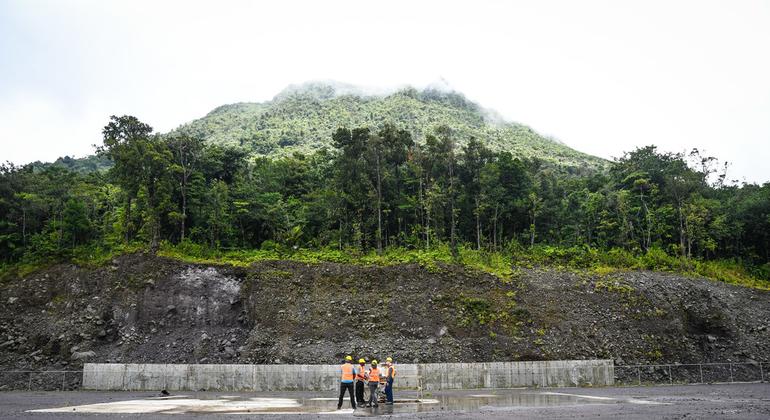A small but growing number of countries are on track to produce all their electricity from renewable sources. Dominica, in the eastern Caribbean, plans to join these pioneers and become the first Small Island Developing State (SIDS) to stop using fossil fuels for energy generation.
Most of these types of States depend on the import of fossil fuels for electricity generation and transportation, which creates great pressure on their resources and endangers their energy security by exposing them to the whims of international fuel markets. .
Dominica, however, has a powerful source of clean energy lurking beneath the Roseau Valley, a popular tourist destination a short drive from the capital, Roseau, that is clean, completely renewable and could provide so much energy that the government could even sell it. excess electricity to neighboring islands.
It’s called geothermal energy, and it’s an exciting prospect for the country. Geothermal does not have the intermittency problems of wind and solar, that is, it provides stable energy day and night, and does not occupy surface area, so the Roseau Valley remains in its pristine state.
A high pressure project
The pipes are drilled deep into a geothermal reservoir, a collection of water heated by the Earth’s underground heat to about 250° Celsius.
Because Dominica sits on a volcanic ridge, this heat is relatively close to the surface. When the pipes reach the reservoir, the high pressure propels it to the surface, where it is converted into steam to drive turbines that produce electricity.
“We have found an excellent geothermal reservoir in Roseau Valley, about a thousand meters deep,” said Fred John, director of the government-owned Dominica Geothermal Development Corporation. “We have built two wells, one to extract hot water and another to return it to the tank, so it is a closed-loop system. “We have chosen the most environmentally friendly and best-in-class technology.”
The Government of Dominica has been convinced for decades that geothermal could transform livelihoods, dramatically reducing the cost of electricity in a country that currently relies mainly on expensive imported diesel as a source of energy and is supplemented by hydroelectric power and a small amount of wind and solar energy.

Commercially feasible energy
“Dominica has been searching for this energy source as far back as 1969,” says Vince Henderson, Minister of Foreign Affairs, International Business, Trade and Energy. “Studies carried out with the assistance of the UN determined that we have the potential to provide energy to the island. We have had the ambition to realize that potential since 1974, when we created the Geothermal Development Corporation.”
It took the Government almost four decades to secure the funding needed to drill test wells, confirming that geothermal energy would be commercially viable, allowing them to sell it to neighboring Martinique and Guadeloupe.
“Geothermal energy development is very expensive, especially for remote island states. We were lucky because we received a combination of grants and concessional loans to get to where we are,” Henderson said, pointing to funding that comes from a variety of sources, including the Caribbean Development Bank, the American Development Bank and the world Bankas well as the governments of New Zealand, the United Kingdom and the United States.
“However,” he added, “if the international community is serious, there has to be some initial investment in the form of grants.”
The Government of Dominica is confident that geothermal energy from the plant could power the island within the next two years, a bit of a wait given the decades-long struggle to get the project off the ground.
“I think this gives the country a real opportunity to transform economically,” John said. “The first step will be cheaper electricity for everyone, which will make a big difference. But then we went on to sell it, generating income for Dominica and allowing the entire island economy to grow.”















Add Comment